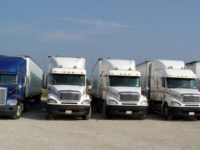The latest report from agricultural bank Rabobank suggests that Australia’s cattle availability will increase in the year ahead as the country’s cattle industry continues to rebuild. However, it warns that supply chain limitations will impede sector growth.
Rabobank’s 2022 Australian Beef Seasonal Outlook report, titled “Recovery well underway but the process will be slow”, elaborated that as cattle numbers start to lift, they will create additional pressures in the already-constrained supply chain and have implications for sales and prices.
“Increased cattle numbers will see some of the urgency leave the cattle-buying market, so prices will drift down. But domestic consumption and export markets are favourable, and we don’t believe there will be any rapid price drops,” the report said. “As cattle numbers increase, buyers will become more discerning. If people are going to continue to pay high prices, they will choose the better quality cattle.”
Report author, Rabobank senior animal proteins analyst Angus Gidley-Baird, said that it was expected heavier discounting would be seen of “poorer cattle and those that don’t meet specifications”.
“Additional cattle will also load up the supply chain. And existing constraints like freight costs, container access, port congestion and labour availability at processing plants will come under further pressure,” Gidley-Baird said. “These constraints will limit the ability to expand capacity to meet the increase in cattle numbers and may lead to some delays in processing cattle and to additional downward pressure on prices.”
Rabobank estimates that cattle slaughter weights will lift two per cent, to an average 318 kilograms. However, severe constraints in meat-processing labour – due to COVID disruptions and lack of skilled workers – plus ongoing freight challenges will limit the production increase. According to the report, the lift in Australian cattle production will lead to increased beef exports in the year ahead, while domestic beef consumption is expected to decline.
“The production increase will mainly benefit export markets,” Gidley-Baird said. “We expect domestic per capita beef consumption to drop by two per cent in 2022, to an estimated average 21.6 kilograms per person. This drop is smaller than in previous years where consumers were confronted with higher retail prices.”
Given the slow population growth rate, total domestic beef consumption is expected to drop one per cent in the year ahead, the Rabobank report said.
On the other hand, Gidley Baird noted that global beef markets are bright, though such strong consumer demand in those markets may be challenged by cost increases. Already, US retail beef prices in 2021 are reported to be 26 per cent higher than the five-year average. Similarly, Chinese retail beef prices were 25 per cent higher.
But while there are some signs of consumer resistance to these higher prices, overall, Rabobank believes they are being accommodated, and demand remains strong though inflationary pressures leading to increased cost of living for consumers and slowing economies may yet result in a weakening of demand.
“While the strong fundamentals of high global prices, strong consumer demand, and limited global supplies still support cattle prices, we feel the urgency that drove local producers’ restocking efforts will subside, and as a result, the heat will be taken out of the market,” Gidley-Baird said. “We believe that by the end of the year young weaner cattle prices could be about 25 per cent lower than where they started the year. But, even with a drop of that, size we will still be at historically high cattle prices and in reality our forecast is only taking us back to the price levels we saw at the beginning of 2021.”















